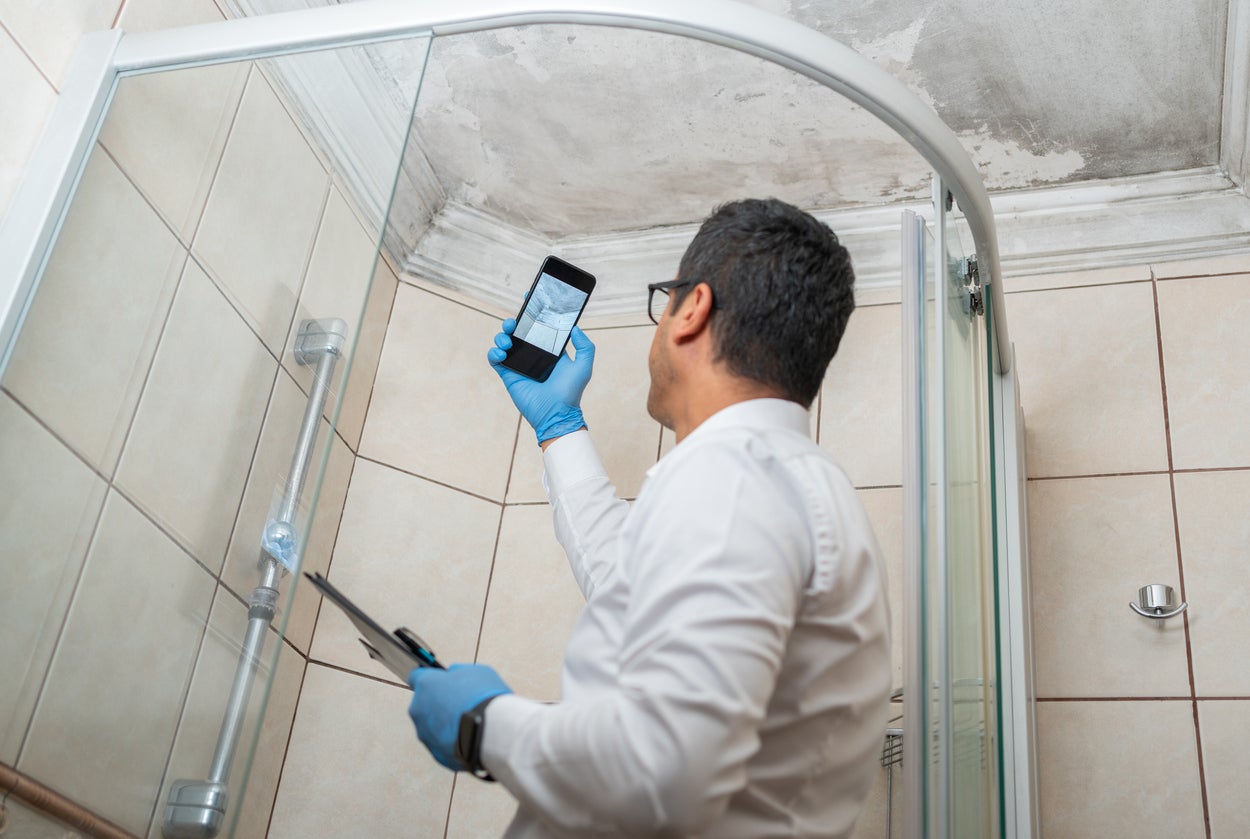Crafting an In-depth Post Mold Remediation Report
Effective Message Mold And Mildew Remediation Solutions for Your Home
Mold and mildew growth in homes can be a relentless concern, frequently needing a systematic technique for reliable post-remediation options. From comprehending the variables that contribute to mold development to implementing proper cleansing methods and dampness control measures, the procedure can be detailed yet essential for keeping a healthy living environment. Post Mold Remediation.
Recognizing Mold Development Factors
The main element adding to mold and mildew growth is moisture. Mold and mildew spores call for dampness to flourish and sprout, making damp or moist settings highly susceptible to mold and mildew problems.

Furthermore, airflow and light exposure can influence mold and mildew growth. Locations that lack correct ventilation and all-natural light are more prone to mold and mildew development. By resolving these elements adequately, individuals can properly alleviate mold and mildew growth and secure their living environments.
Appropriate Mold And Mildew Cleansing Methods
Making use of efficient cleansing approaches is essential in dealing with and stopping the reoccurrence of mold and mildew contamination in interior atmospheres. The very first step in proper mold cleaning is to have the damaged location to avoid the spread of spores to uncontaminated areas.

Carrying Out Dampness Control Procedures
To effectively avoid mold and mildew development and contamination in interior atmospheres, implementing dampness control measures is vital. Wetness is the main factor that fuels mold and mildew advancement, making it vital to handle humidity degrees within the home. One efficient procedure is to make use of dehumidifiers to keep indoor moisture levels below 60%. In addition, guaranteeing appropriate ventilation in locations vulnerable to moisture build-up, such as kitchen areas and restrooms, can help minimize the threat of mold and mildew development. Consistently evaluating and fixing any kind of leakages in pipes, roofing systems, or windows is also vital in preventing excess dampness build-up. Using exhaust fans while cooking or showering, and allowing air circulation by maintaining furniture a little far from walls can aid in moisture control. Utilizing moisture-resistant sites products in high-humidity areas, such as mold-resistant drywall and paints, can be advantageous. By diligently applying these wetness control actions, homeowners can efficiently lower the probability of mold recontamination website link and keep a healthy and balanced interior atmosphere.
Utilizing All-natural Removal Solutions
After effectively executing dampness control measures to protect against mold development in interior settings, property owners can currently discover the effectiveness of natural removal services in preserving a healthy and balanced space. All-natural remediation remedies utilize ecologically pleasant approaches to combat mold and mildew, making them a prominent selection for those looking for safe alternatives. One such service is utilizing vinegar, a natural antimicrobial agent, to disinfect and clean surfaces contaminated by mold. Simply water down vinegar with water and spray it onto the impacted locations, permitting it to sit for a few hours before wiping clean. In addition, tea tree oil, recognized for its antifungal properties, can be mixed with water and sprayed onto mold-infested surfaces to hinder more development. An additional natural option is hydrogen peroxide, which can effectively kill mold and mildew on numerous surface areas without leaving dangerous deposits behind. By incorporating these natural removal solutions right into their cleaning regimens, home owners can effectively combat mold and mildew development while promoting a much healthier indoor environment on their own and their family members.

Keeping a Mold-Free Atmosphere
Consistently evaluating areas prone to mold development, such as shower rooms, attics, cellars, and kitchen areas, is important. Proper air flow in areas with high humidity levels is additionally crucial to stopping mold development.
Furthermore, preserving sanitation in the home is essential for mold and mildew prevention. Keeping interior plants in check and making sure correct drainage in outdoor landscape design can decrease dampness why not try here accumulation, lowering the possibility of mold invasions.
Final Thought
To conclude, it is necessary to address mold and mildew growth variables, utilize correct cleaning strategies, implement dampness control actions, utilize all-natural remediation options, and maintain a mold-free atmosphere in order to efficiently deal with article mold remediation in your house - Post Mold remediation cleaning. By following these techniques, you can avoid mold and mildew from recurring and make sure a healthy and balanced living environment for you and your household
The key factor contributing to mold development is moisture. Mold spores need dampness to sprout and thrive, making wet or humid atmospheres very susceptible to mold invasions.To properly prevent mold and mildew growth and contamination in interior atmospheres, executing moisture control measures is extremely important. Additionally, making sure correct air flow in locations prone to moisture buildup, such as restrooms and cooking areas, can help reduce the risk of mold development.After successfully implementing moisture control measures to avoid mold growth in interior settings, homeowners can now discover the performance of all-natural removal options in preserving a healthy living space.